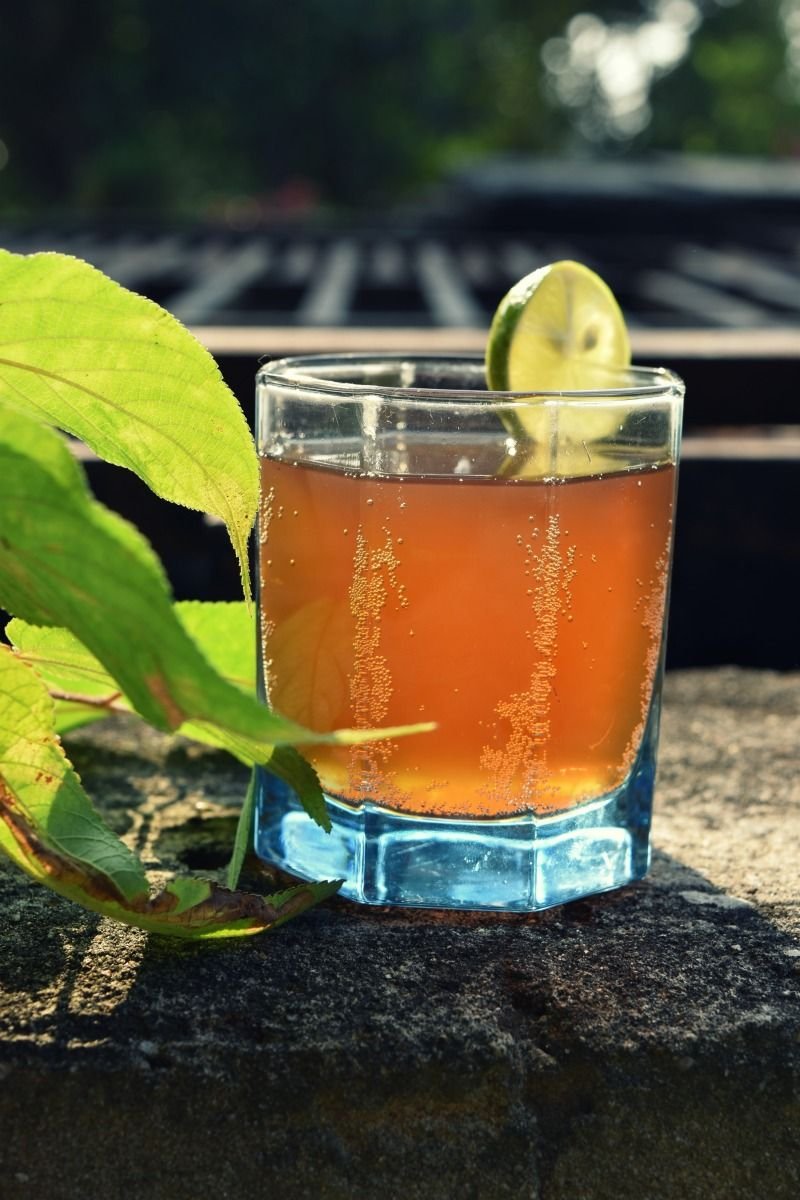
Touted as the “Immortal Health Elixir” by the ancient Chinese, kombucha has been around for more than 2,000 years. Though this incredible fermented drink has been well-known as a digestive aid, it can do so much more such as protecting our heart and brain.
Did you know that 80 percent of your immune system is located in the gut with the digestive system being the second largest part of your neurological system? Therefore our gut is often referred to as the “second brain.”
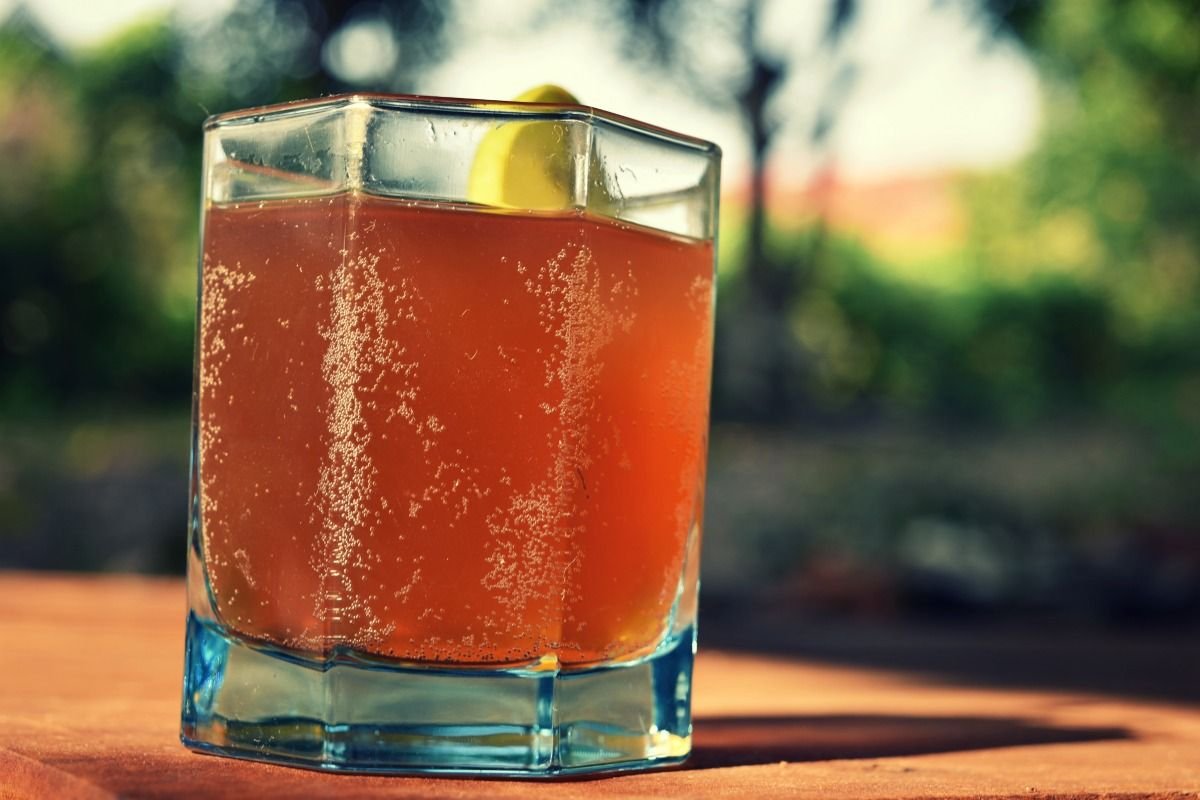
Why You Should Have a Glass of Kombucha Every Day
Kombucha houses a large number of health-promoting friendly bacteria aka probiotics. We often fear bacteria as we associate them with disease. But you should not fear these little ones though.
Friendly gut bacteria line the digestive tract and support the immune system. They absorb nutrients and fight infections and disease.
Drinking one glass of kombucha every day can help you keep the immune system working at its full capacity which brings a host of other benefits to your overall health.
Nutritional value of kombucha
Kombucha is fermented sweet tea. Since it is made with sugar people often think it is unhealthy and high in calories. But the opposite is true. During the fermentation process, the bacteria use up most of the sugar to turn the tea into a beautiful, probiotic-rich tangy drink.
Though the nutritional value may differ between brands and homebrews, a 500 ml or 16-ounce bottle of unpasteurized (pasteurization kills the bacteria), organic kombucha contains 60 calories, 20mg sodium, 14g carbs, and 4g sugar. Furthermore, it also contains 25% of the daily value of folate and 20% B1, B2, B3, B6, and B12.
Making it an ideal drink for vegans and vegetarians to help keep their B12 in check, as this is a common nutrient deficiency.
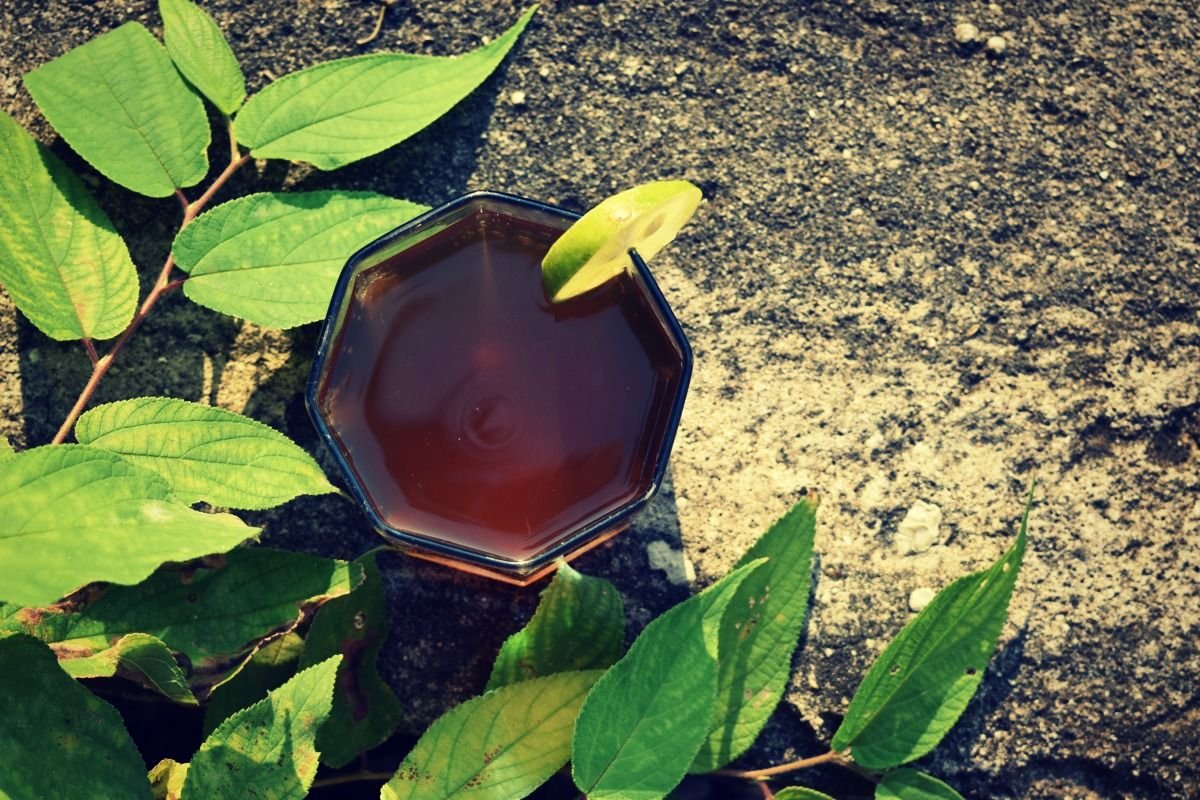
How To Brew Your Own Kombucha Tea At Home
Kombucha is nothing more than fermented sugar tea. Although it’s usually made with black tea, kombucha can also be made with green teas. I love a mix of both. Up to you to experiment and brew one you like most.
To ferment the tea you need what they call a “SCOBY” (symbiotic colony of bacteria and yeast). If you missed my previous post on how to make this from scratch. Click the link below, because it is impossible to make kombucha without this alien looking disc who some refer to as a kombucha mushroom.
WILD FERMENTATION SERIES | 👾 How To Make A Kombucha Scoby From Scratch 👾
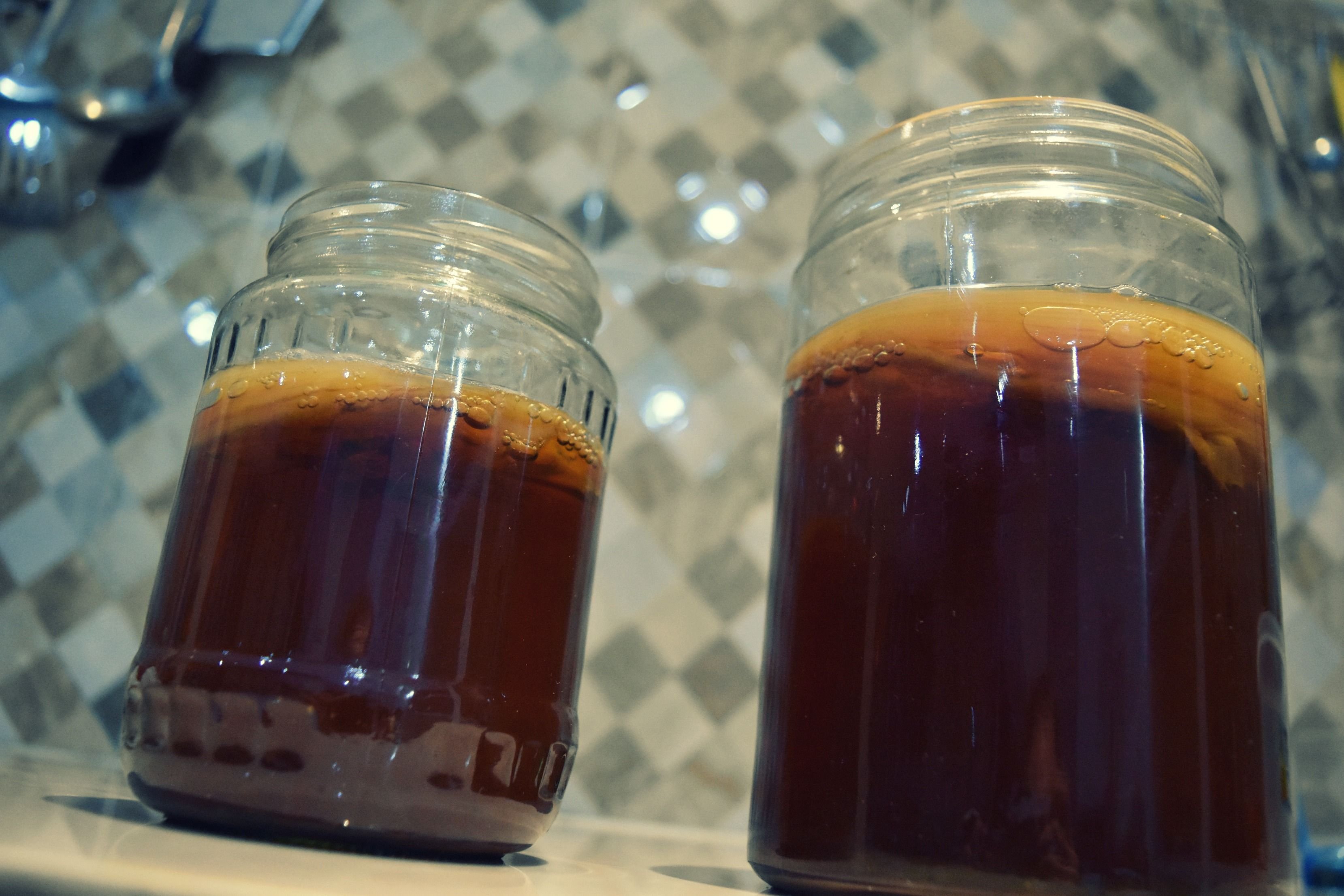
Kombucha Tea Recipe
The recipe below makes about 8 cups or 1.9 liters. If you don’t have a big enough jar you will need two scobies. One for each jar.
Since we don’t have convenience stores where we live I had to help myself with the recycled jars I had at home. At first, I started out with 2 scobies one in a jar of 1 liter or 4 cups and one of 0.5 liter or 2 cups. By now I have doubled the amount as that’s about the amount we drink before the next batch is ready again.
Since we live in a tropical hot climate fermentation goes fast here. After 5 to 7 days we have our fizzy kombucha but if you live in a colder climate it might take 9 or maybe 12 days.
Though I like my kombucha as it is you could also infuse it with fresh fruit juices, herbs and spices. Ginger and lemongrass are two that work very well.
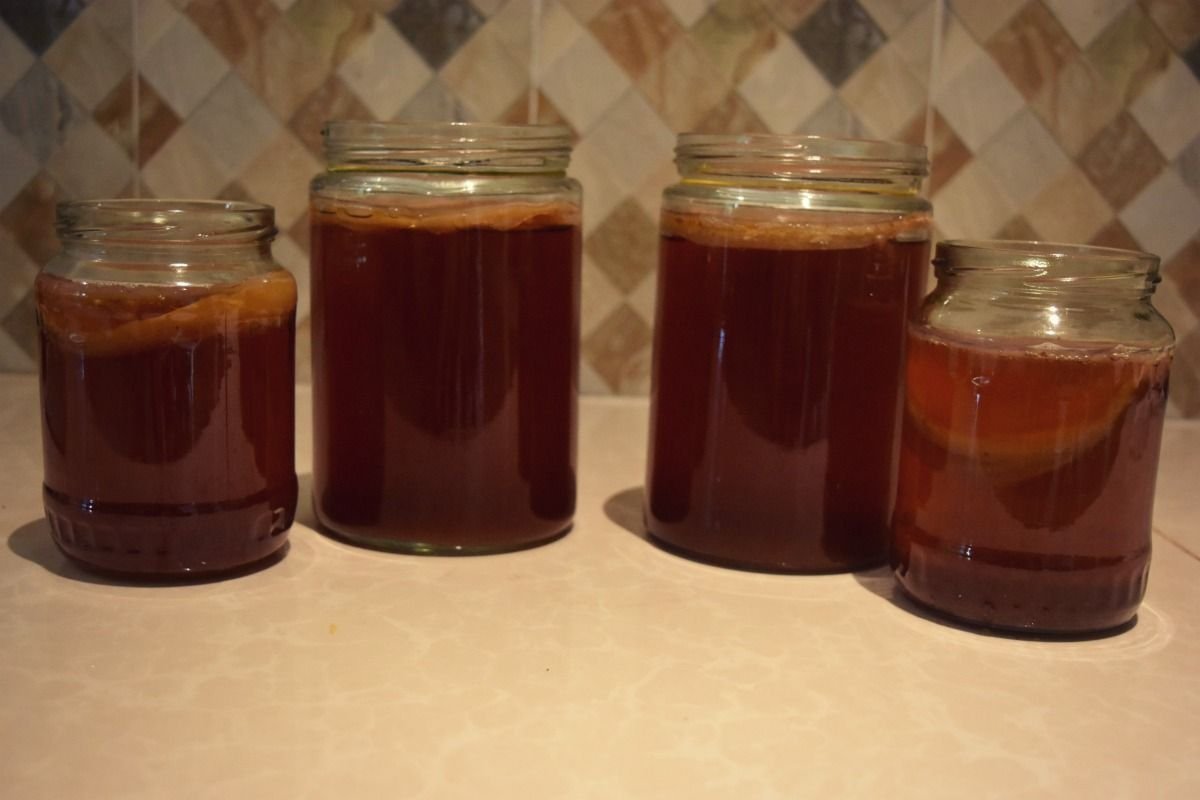
Ingredients
- 7 cups water
- 1/2 cup granulated sugar (white or raw sugar. Do not use sugar substitutes such as honey or maple syrup)
- 4 bags black tea or 2 tablespoons loose leaf tea (I use 2 bags black tea and 2 tbsp Cambodian green jasmine tea)
- 1 cup starter tea from your previous batch (the lactic acid present in the tea will create a selective environment where the friendly bacteria thrive and others are disencouraged to grow)
- 1 scoby per jar (I used 2)
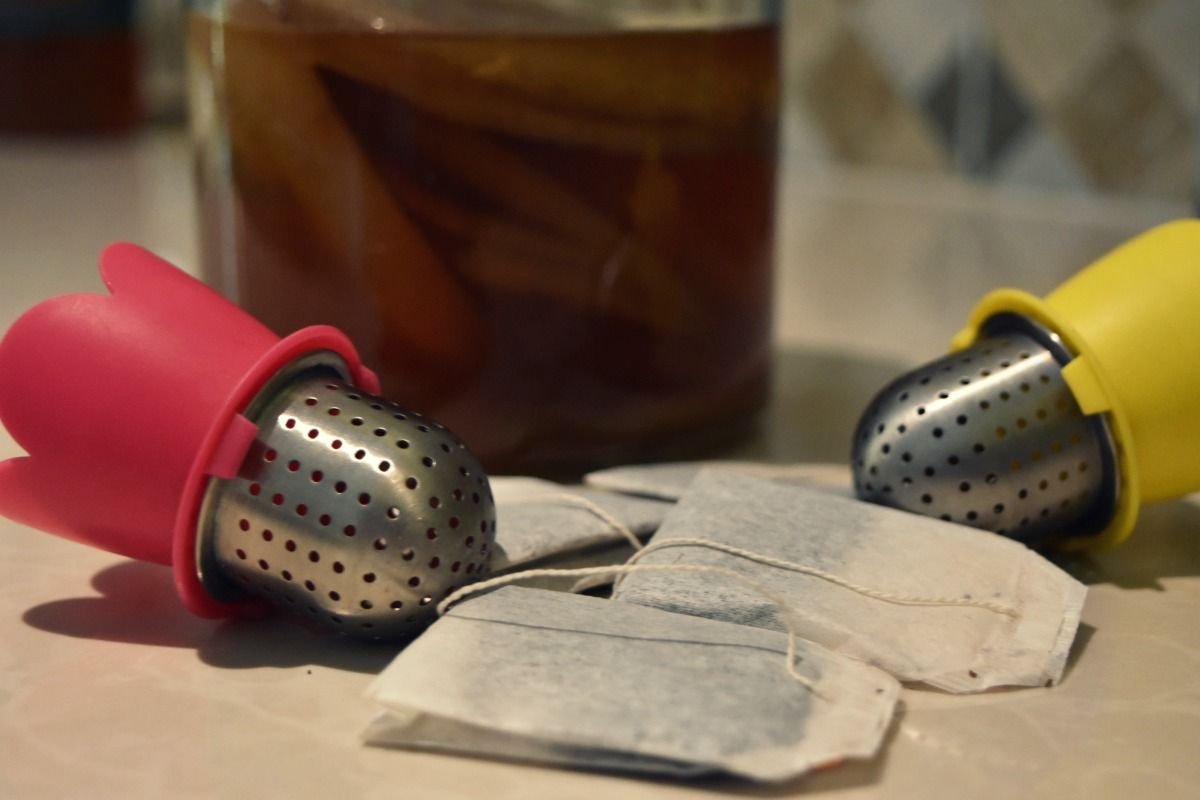
Directions
- Bring water to a boil and stir in the sugar until dissolved. Add the black tea and steep the tea for 10-20 minutes. Allow to cool completely.
- When cooled, stir in the starter tea, mix well and pour the sweet tea into a jar(s).
- Place the scoby in the jar. Cover with a rubber band and coffee filter or clean cloth. No worries if the scoby doesn’t seal of the jar or decides to lay sideways or on the bottom, a new scoby film will start to grow at the top to seal the tea from the air and unwanted intruders.
- If this is your first batch, taste the tea so you know what you started with. After a few days (4-5) do a taste test. If it isn't sweet anymore and to your preferred tanginess level it’s time to get some fizz into the kombucha and flavor it with fruit juice, herbs, or spices if you like. Like said I like my black tea and jasmine green tea mix. If you ferment too long it will be too acidic and start to taste like vinegar.
- To carbonate the drink or create some fizz, pour the tea in a clean bottle with a lid and allow the fizz to build up. If using a glass bottle be careful that the build-up isn’t too strong as it may explode. That’s why most people like to use a plastic bottle as you can squeeze the bottle and feel it harden as the fizz builds up. If there is too much pressure release the cap or lid and let it burb to release.
IMPORTANT: MAKE SURE TO KEEP A CUP OF THE FERMENTED TEA TO START YOUR NEXT BATCH AND TURN THIS INTO A CONTINUOUS SYSTEM - Once the bottles are hard and you have the desired amount of fizz, store the bottle in the fridge to stop the fermentation and carbonation process.
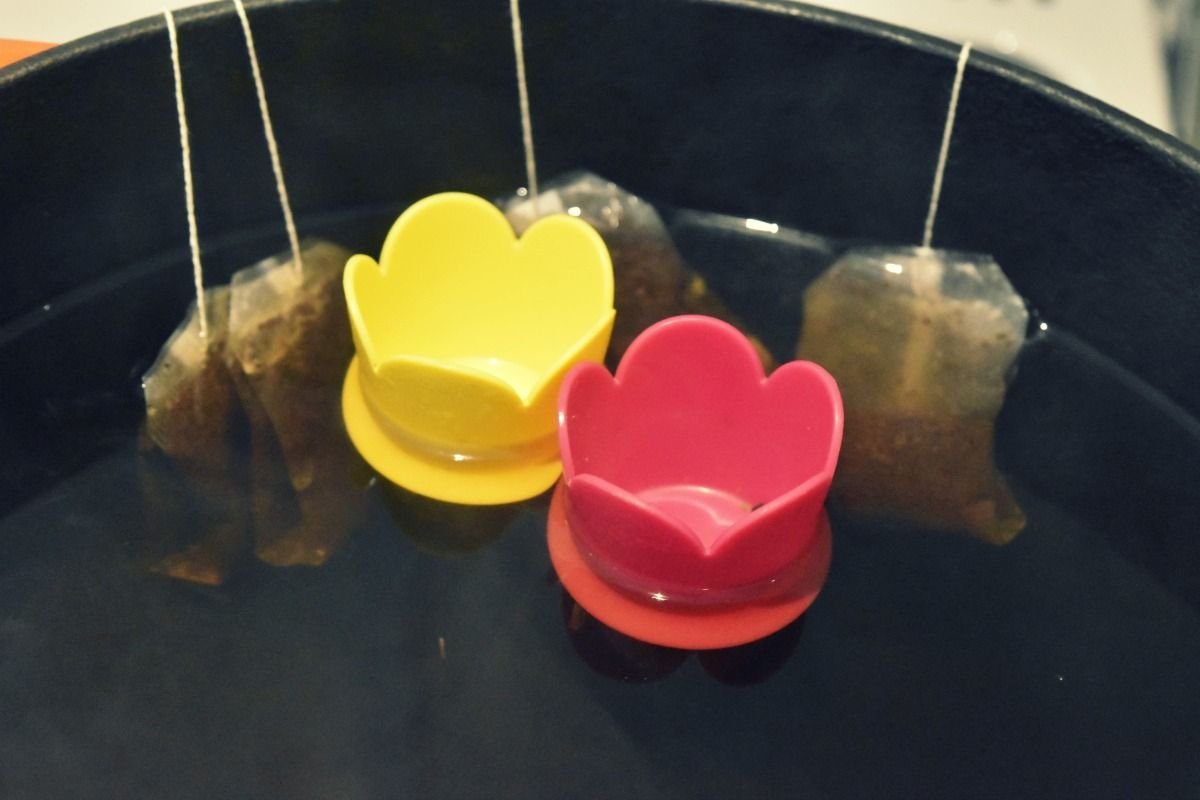
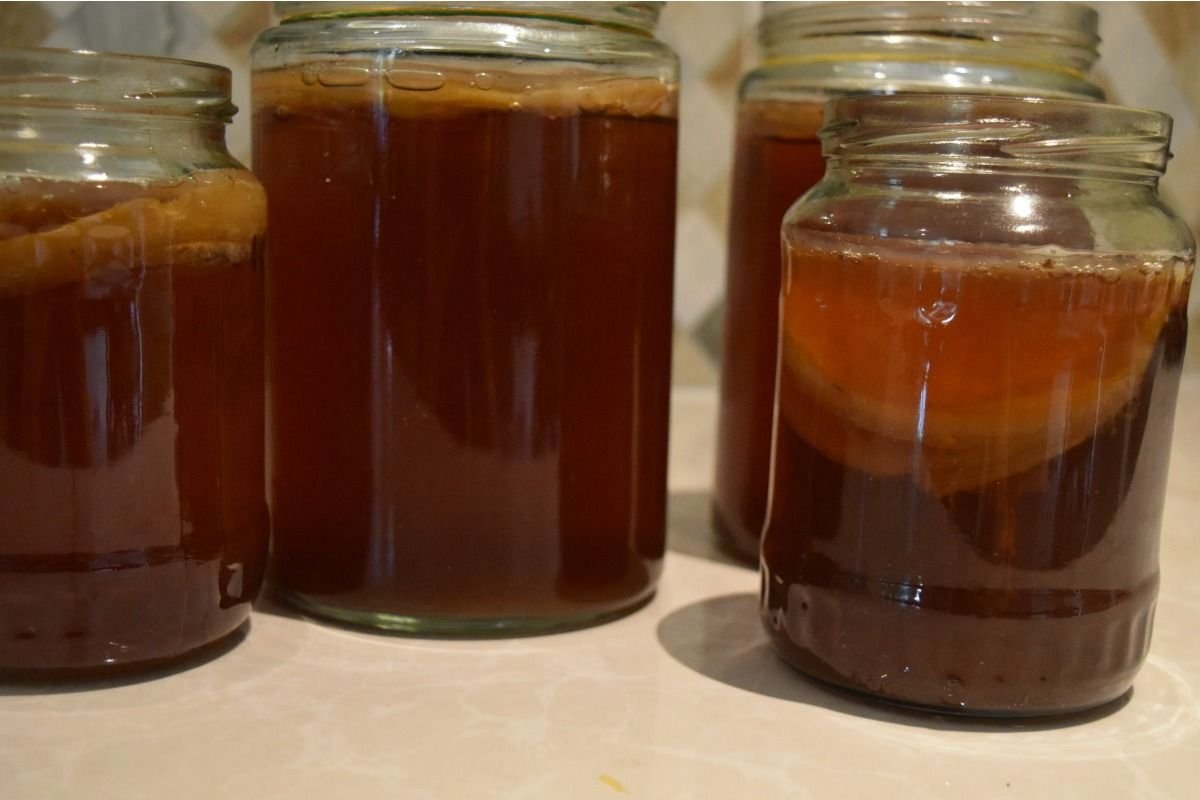
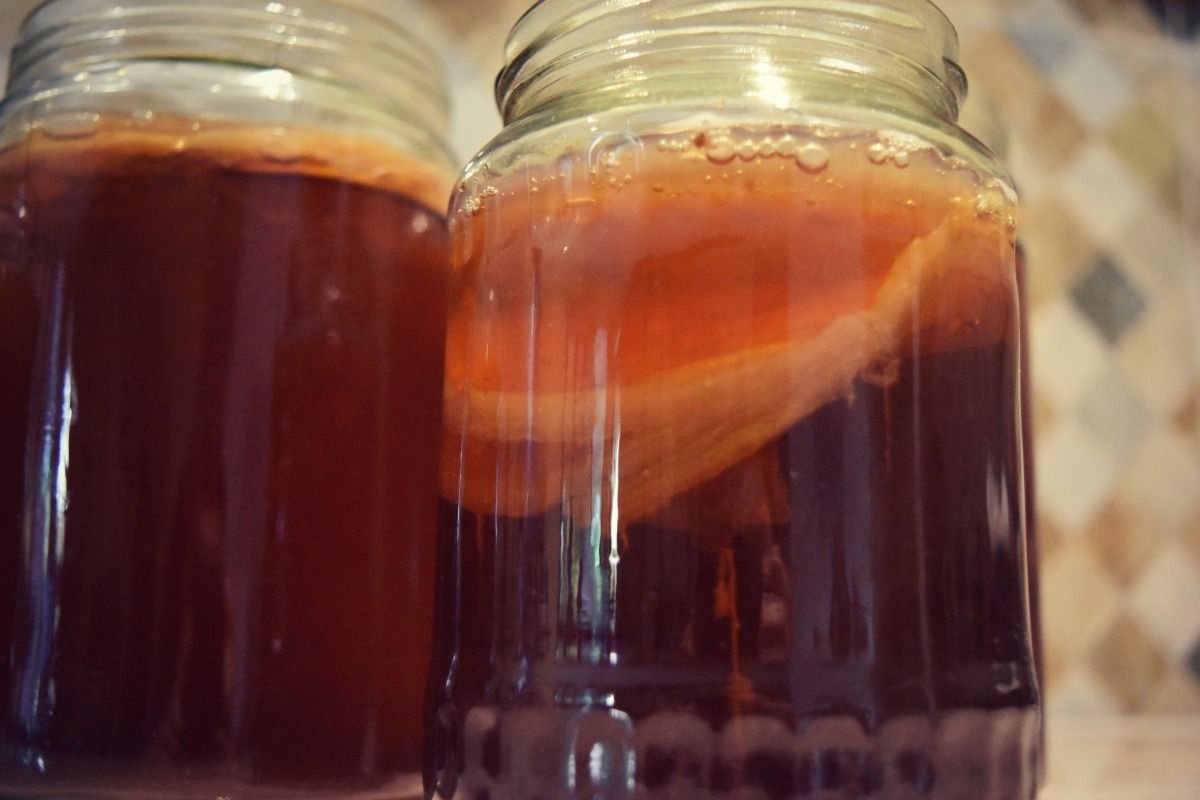
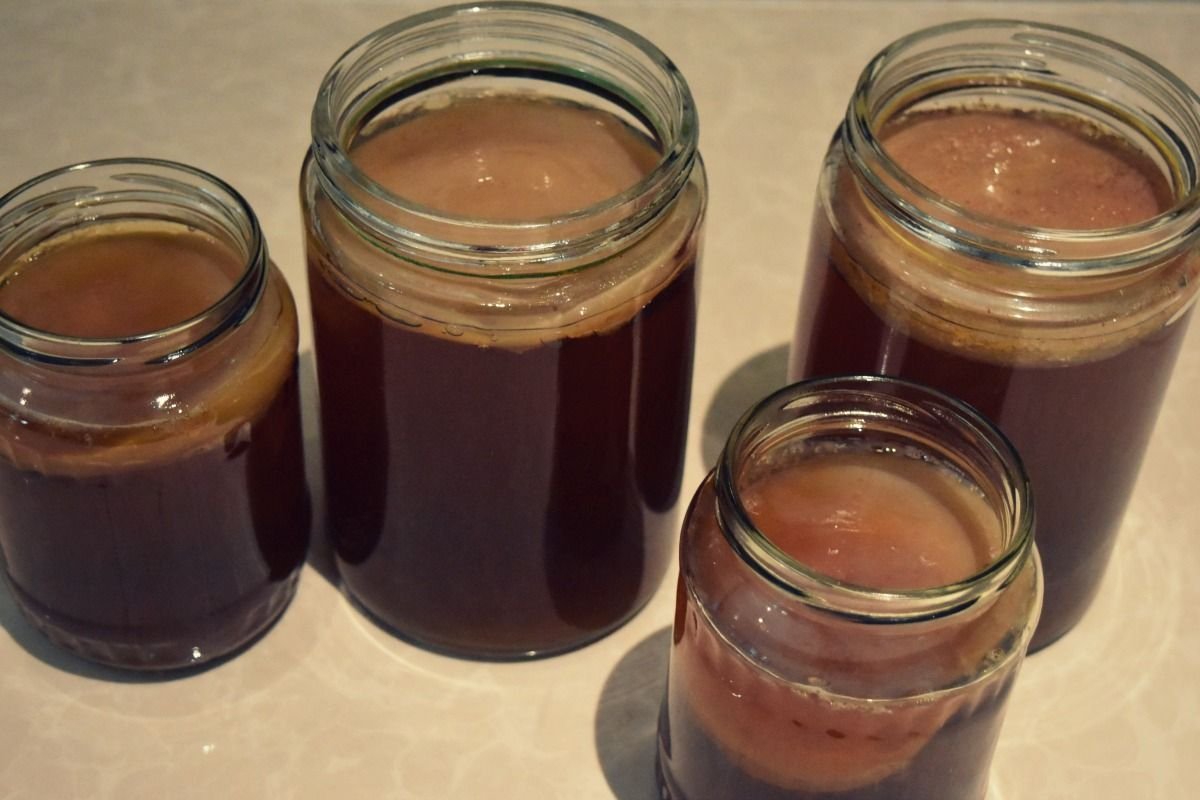
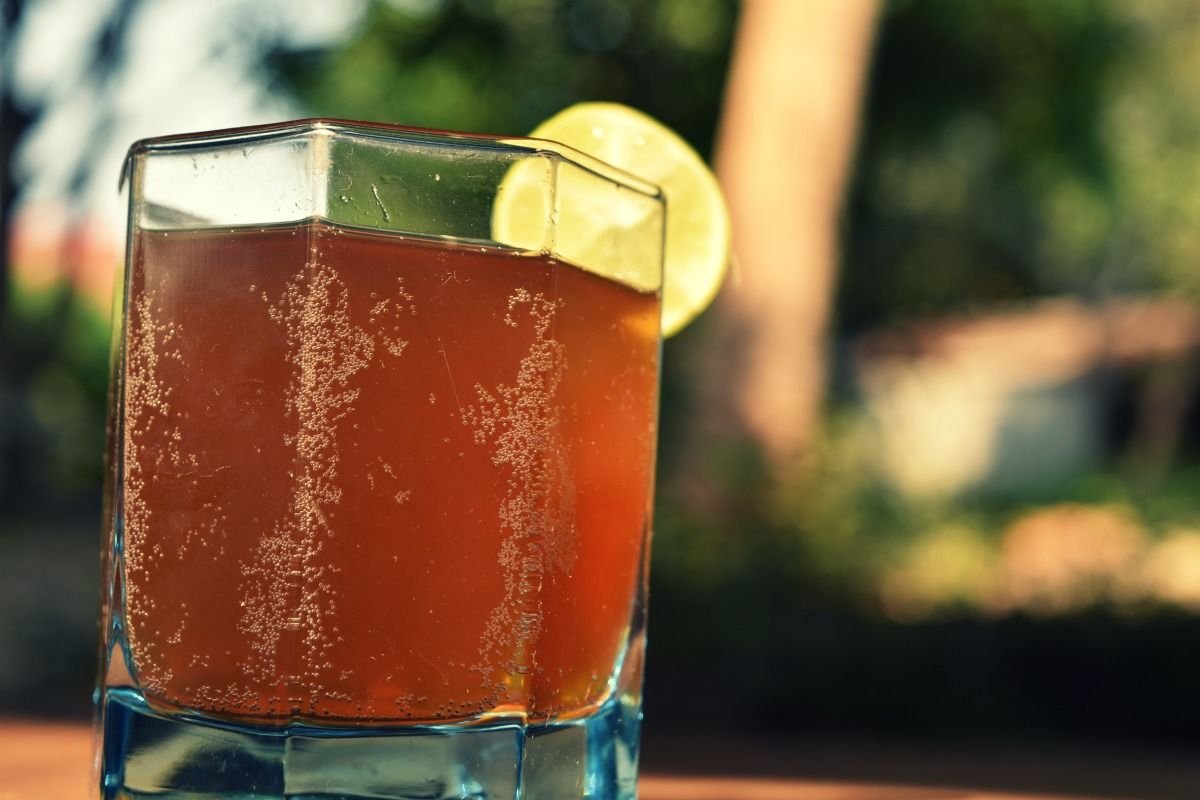
Happy fermenting my dear friends ღ ღ ღ

ALL CONTENT IS MINE AND ORIGINAL!
PICTURE(s) TAKEN WITH NIKON D5600
